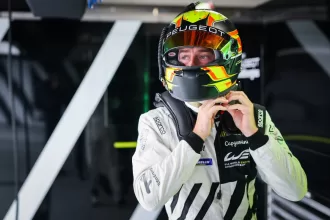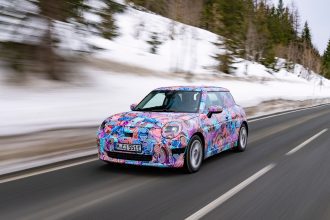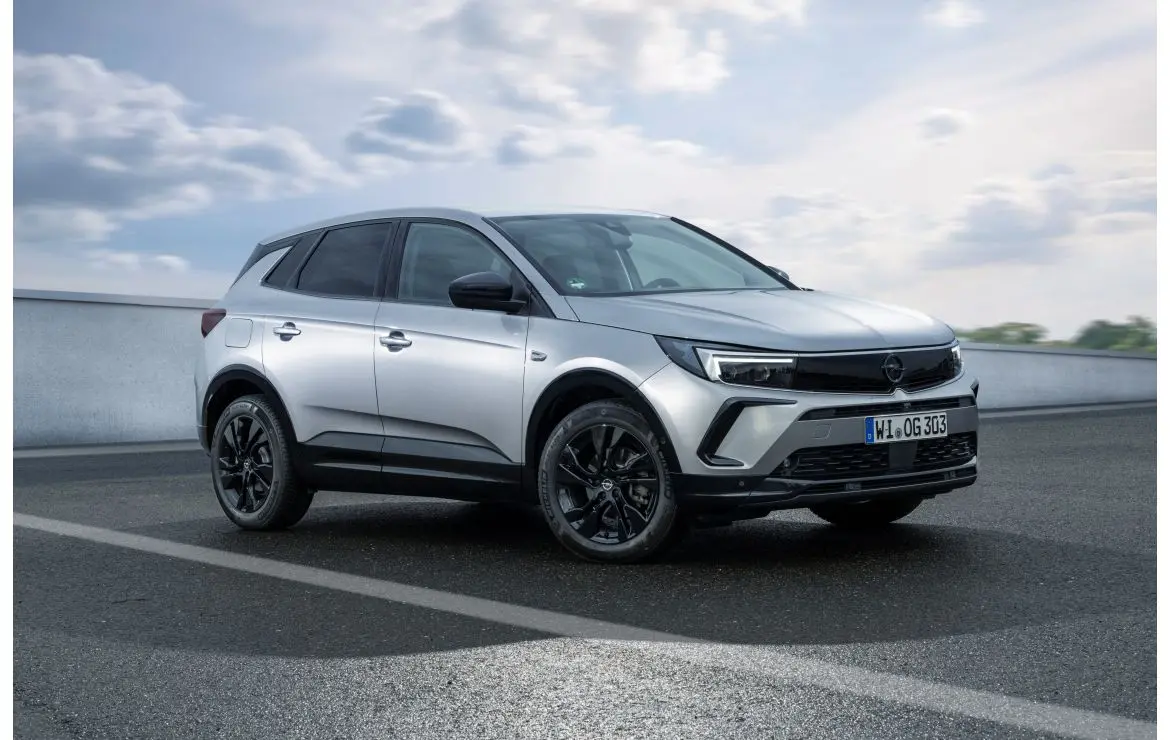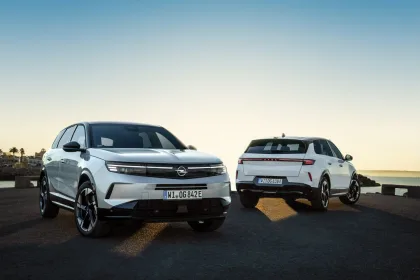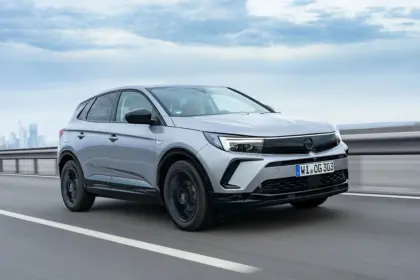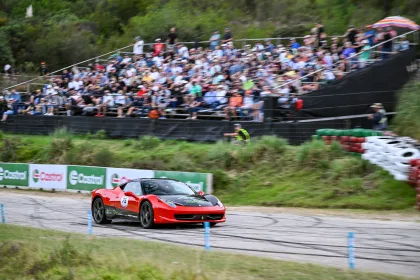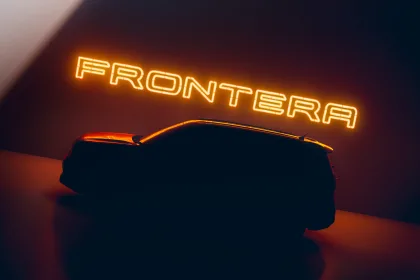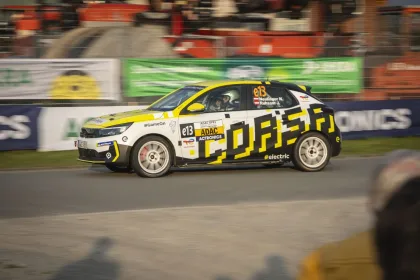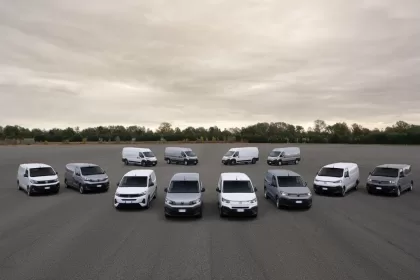- Electrified: 21 kW electric motor, new petrol engines, dual clutch transmission
- Hybrid advantage: CO2 emissions and consumption down, purely electric at low speeds
- Optimal coordination: Seamless operation of petrol engine and electric motor
- At a glance: Practical hybrid information in driver information display
Opel is now offering hybrids with 48-volt technology for the first time. Both the small car bestseller Opel Corsa and the top-of-the-line Opel Grandland SUV are now available with this technology. The new drive alternative is perfect for customers who primarily travel in towns and sub-urban areas. In addition, the advanced technology is easy to use and will also appeal to drivers who want to enjoy electric driving pleasure for the first time without having to recharge electricity externally.
The system features a lithium-ion battery that is recharged automatically under certain driving conditions and new turbocharged 1.2-litre three-cylinder petrol engines with 100 kW/136 hp for Corsa and Grandland and 74 kW/100 hp as an additional option for the Corsa that have been developed especially for the hybrid application. The engines are coupled to a new electrified six-speed dual clutch transmission and a 21 kW/28 hp electric motor.
This enables hybrid drivers to enjoy particularly efficient and user-friendly electrified mobility combined with plenty of driving pleasure. For example, compared to the similarly motorised non-electrified Corsa 1.2 with eight-speed automatic transmission drivers of the new Corsa Hybrid with 74 kW/100 hp can save around one litre of fuel per 100 kilometres (around 18 percent) and thus also reduce CO2 emissions.
48-volt hybrid technology: Electrified, efficient, simple and space-saving
The compact 48-volt hybrid technology consists of the following components:
- A new generation of three-cylinder, 1.2-litre petrol engines that have been specially developed for hybridisation and to meet the Euro 6.4 emissions standard. Both the 74 kW/100 hp (Corsa) and the 100 kW/136 hp (Corsa and Grandland) engines reach their peak power out at 5,500 rpm and develop maximum torque of 205 Nm and 230 Nm respectively at 1,750 rpm. For optimum efficiency, the new engines operate in the Miller combustion cycle. This thermodynamic cycle is enabled by the variable geometry turbocharger, which enhances performance at low rpm, and variable valve timing.
- A new electrified six-speed dual clutch transmission that has also been designed especially for hybrid applications. The gear shifts without torque interruption are shorter and comfort is higher. The transmission casing also houses the electric motor and the DC inverter, optimising the size and weight of the drivetrain and ensuring that excellent driving performance is delivered.
- A permanent magnet synchronous electric motor, integrated in the gearbox, produces peak power of 21 kW/28 hp and maximum torque of 55 Nm.
- A belt-driven starter (also 48-volt technology based) which – in combination with the electric motor – starts the petrol engine from a cold start. The belt-starter also restarts the engine quickly and seamlessly during the drive.
- A 48V lithium-ion battery with a useable capacity of 432 Wh (gross 890 Wh), which is recharged via recuperation and the petrol engine, installed under the front left seat (Grandland Hybrid: underbody). This location not only achieves optimum weight distribution for good driving dynamics but also allows the full volume of the boot to be retained.
- Two electrical networks. A low voltage 12V network supplying the car’s equipment (e.g. electric windows, infotainment system); and a 48V network to supply the hybrid system. A direct current converter to transfer electrical energy from the 48-volt to the 12-volt network is also included. If the 48-volt battery is almost empty – for example, after the car has been idle for a particularly long time – the converter can transfer energy for service purposes from the 12-volt to the 48-volt network.
Seamless transition: Petrol engine and electric motor operate in perfect coordination
In everyday driving in the city and on country roads, the petrol engine and electric motors of the Opel Corsa Hybrid and Opel Grandland Hybrid work together or separately depending on requirements – always in optimal harmony between energy consumption and performance. The technology really shines in city traffic.
To ensure that the catalytic converter and brake assistant function optimally from the first tap on the accelerator pedal, the petrol engine is always used when starting the Corsa Hybrid and Grandland Hybrid. The electric drive supports the petrol engine when accelerating and starting from a standstill. The electric motor contributes torque, especially at low engine speeds, which benefits driving dynamics and CO2 savings.
At low speeds, the electric motor also enables fully electric travel for up to one kilometre or up to 50 percent of the time used in the city – for example when manoeuvring. The vehicle automatically switches to electric drive when the battery charge, outside temperature and catalytic converter temperature are appropriate. If the Corsa Hybrid and Grandland Hybrid decelerate (at speeds of up to 140 km/h), the petrol engine switches off and the electric motor acts as a generator to recharge the 48-volt battery of the hybrid system. At the same time, when the accelerator pedal is released, the hybrid can “sail” with the support of the electric motor.
Grandland Hybrid and Corsa Hybrid drivers can choose between the three driving modes Eco (for particularly efficient operation), Normal and Sport. In Sport mode, the petrol engine is always running to ensure the required performance at all times.
At a glance: Driver information display with hybrid-specific information
Grandland Hybrid and Corsa Hybrid drivers can easily and conveniently keep an eye on the most important displays for the current operating mode, energy status and much more thanks to hybrid-specific information.
The numbers on the digital speed display are white when the petrol engine is running. If this switches off and the vehicle is operated purely electrically, the display changes to blue. The additional permanent power display (replacing the rev counter) in the driver information display is divided into:
- Power: The vehicle provides maximum power, the combustion engine and electric motor work at the same time.
- Eco: The vehicle is currently running with the best energy efficiency (petrol engine or electric motor).
- Charge: The vehicle is decelerating and recuperating energy.
When the driver brings up the energy flow display, a schematic representation of the vehicle appears in the driver information display showing the flow of energy between the battery, petrol engine and wheels as well as the charging status of the battery. The current operating status – 100 percent electric driving, energy recuperation or the power coming from the combustion engine – is displayed in different colours.
When the Grandland Hybrid and Corsa Hybrid are switched off, the trip summary display provides additional data such as the distance travelled, the duration of the journey, the average consumption, the remaining range and the percentage of the route driven purely electrically.
Opel Corsa Hybrid and Grandland Hybrid: The advantages at a glance
- The technology is compact (the electric motor is integrated into the transmission housing), efficient (energy consumption and CO2 emissions are reduced by around 15 to 18 percent, depending on the model) and therefore economical.
- It enables locally emissions-free, quiet electric operation at low speeds in the city (up to one kilometre at a time). At higher speeds, it offers electrical support for maximum power output and allows “sailing” on the motorway.
- Thanks to optimal coordination of the entire system and seamless gear changes, passengers enjoy a high level of driving comfort.
- Drivers do not have to recharge their hybrid car externally via a socket or charging station; the battery recovers energy when the vehicle decelerates.
- The Grandland Hybrid offers a towing capacity of up to 1,250 kilogrammes for professional, leisure and family tours with heavy luggage.
- Thanks to their electrified drive, the new Opel models with 48-volt hybrid technology are an economical alternative to purely conventionally powered vehicles.

